BROOKLYN & THE “JUMPING SELFIE” (1886)
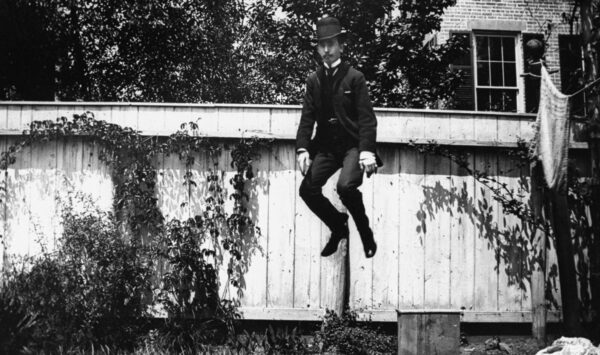
******************************************************************************************************************************** Brownstone Detectives investigates the history of our clients’ homes. The story you are about to read was composed from research conducted in the course of one of those investigations. Do you know the history of YOUR house? ******************************************************************************************************************************** In 1886, there was a LOT of jumping on Livingston Street. That year, a man by the name of Wallace G. Levison, an amateur photographer who lived on the street with his family, was testing a new type of film along with its ability to capture subjects in the process of motion. As the dawn of the 20th century approached, newer, more sensitive film emulsions were being developed that allowed pictures to be taken with faster and faster shutter speeds. Levison was set on experimenting with them. An avid photographer, he used the new technology both as a scientific tool and a recreational activity. In addition to being an amateur photographer, Levison was a chemist, inventor, and lecturer who founded the Departments of Mineralogy and Astronomy at the Brooklyn Institute of Arts and Sciences in the latter half of the 19th century. He may have also invented the concept of the “jumping selfie.” ORGANIZING SHUTTERBUGS Born at 1435 Pacific Street, Brooklyn (where – except for the 1880s-1900s – he would live for most of his life) in 1846, Levison attended Cooper Union, New York City’s prestigious free school for the sciences and arts, and graduated with a BS from Harvard in 1870. He was a member of the New York Mineralogical […]
HOW TO REMOVE A BROWNSTONE STOOP (1905)
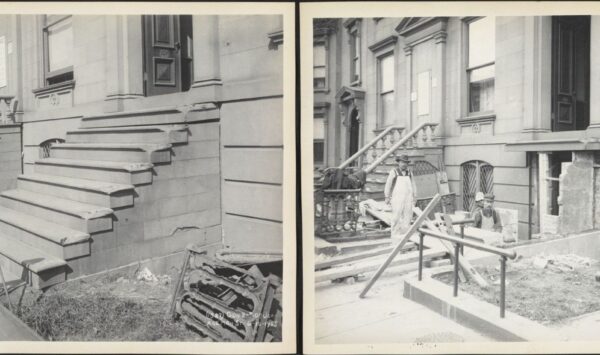
******************************************************************************************************************************** Brownstone Detectives investigates the history of our clients’ homes. The story you are about to read was composed from research conducted in the course of one of those investigations. Do you know the history of YOUR house? ******************************************************************************************************************************** Today, brownstone owners shake their heads in wonder. “Why would anyone intentionally remove the stoop from their own townhouse?” they muse. The stoop, like a timeless portrait’s gilded frame, is a vital element to the design and use of the townhouse. It carries the focus of the viewer into the house itself, just as the stoop physically transports the resident bodily into the house. A brownstone house simply cannot exist without its stoop. Well, like shag carpeting in the 1970s, stoop removal was all the rage in the 1940s. “Remove your stoop and turn your brownstone into apartments,” was the sage advice of contractors hoping to bring their clients’ properties into the 20th century. “Remove your brownstone stoop and add value to your property,” they said. If you didn’t see it happen, though, with your own eyes, you might assume that the destruction was merely accidental. Perhaps a car crashed into the structure and damaged the stoop beyond repair, or time and the elements slowly destroyed the stoop. Well, here, thanks to the New York Historical Society, we have pictures – in all their “glory” – of the “before,” “during” and “after” snapshots of the destruction of one of those august brownstone set of steps. These, documenting the disappearance of a […]
THE RAREBIT FIEND OF 23 MIDDAGH ST (1906)
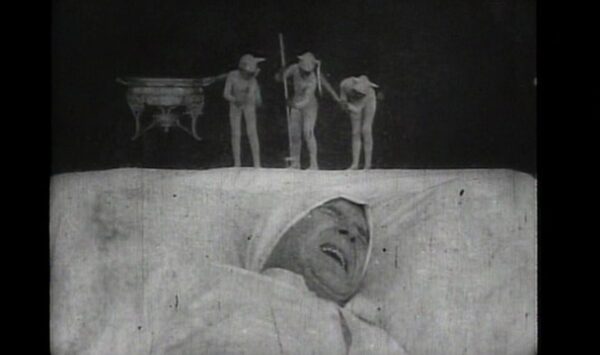
******************************************************************************************************************************** Brownstone Detectives investigates the history of our clients’ homes. The story you are about to read was composed from research conducted in the course of one of those investigations. Do you know the history of YOUR house? ******************************************************************************************************************************** At No. 23 Middagh Street in Brooklyn Heights, in the early 20th century, lived the veteran actor, John P. “Jack” Brawn, who starred in upwards of 24 motion pictures. Most notably, he starred in the first ever trick motion picture, 1906’s “The Dream of a Rarebit Fiend.” Brawn lived on Middagh with his wife, Ethel Brooke Ferguson, who had been his leading lady on stage and whom he married in 1903. THE DREAM A trippy movie, “The Dream of a Rarebit Fiend” is about a man, played by John P. Brawn, the titular “fiend,” who has an all-too-real dream after consuming a large meal of Welsh Rarebit. His dream, rather a nightmare – the result of an upset stomach, the film implies – was likely supposed to represent the penance that could expect to be paid for the sin of gluttony connected with living a life of overabundance. The director of the short film, Edwin S. Porter, based the film on a comic strip, using it as a vehicle to present his mastery of the technical aspects of film-making, which displayed a good deal of hands-on special effects work – double exposures, miniatures and other camera trickery. Few cinema-goers, it is certain, would have seen a picture like this at the time. […]
RESCUE OPERATION ON “BOERUM HILL” (1964)
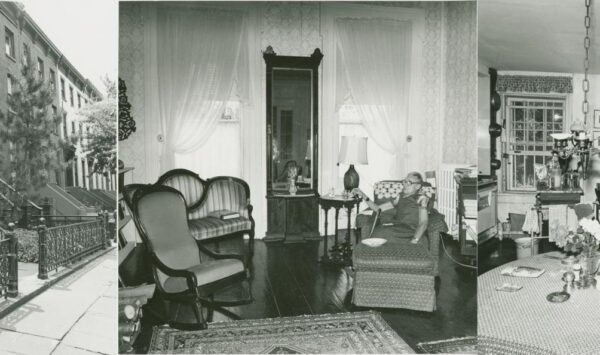
******************************************************************************************************************************** Brownstone Detectives investigates the history of our clients’ homes. The story you are about to read was composed from research conducted in the course of one of those investigations. Do you know the history of YOUR house? ******************************************************************************************************************************** Most Boerum Hill residents do not know the name Helen Buckler – but they should. While she wasn’t instrumental in building Boerum Hill, she was the reason it got its name. She also started the organization that ushered in the wave of brownstoners and brownstoning in the area, the Boerum Hill Association. Brownstoning – or the renovation of brownstones back to their former glory – is not a recent trend. Like many other movements, brownstoning appeared in parts of New York City in waves as good/bad economic times ebbed and flowed, neighborhoods fell in and out of fashion, and young professionals, who were usually the harbingers of those waves, “discovered” New York City’s 19th century brownstones. One of those waves washed over Brooklyn in the early 1960s. Helen Buckler rode, from her Dean Street brownstone, firmly atop the crest of that era’s wave. She named it Boerum Hill. BOERUM HILL BEGINS A few years after Buckler bought No. 238 Dean Street, she started the Boerum Hill Association. Then, already at the age of 70, she was no ordinary brownstoner. Her enthusiasm attracted to the organization approximately 20 like-minded families who were also interested in renovating their brownstones in the area. The purpose of the organization was to improve the community and […]
BEECHER’S BROWNSTONE GETS A RENO (1940)
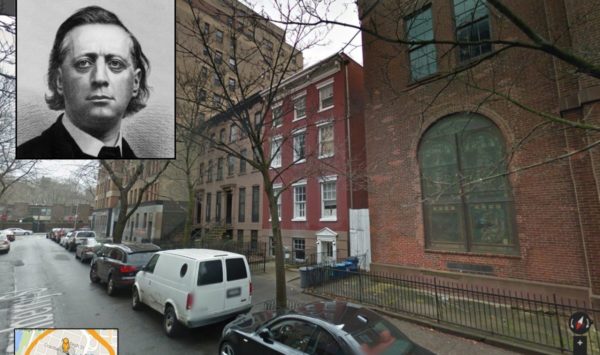
******************************************************************************************************************************** Brownstone Detectives investigates the history of our clients’ homes. The story you are about to read was composed from research conducted in the course of one of those investigations. Do you know the history of YOUR house? ******************************************************************************************************************************** In 1940, Nora Sullivan embarked upon a renovation of 66 Cranberry Street. It was an historic brownstone built in the mid-1800s, at some point being occupied by the Joel Osteen of his day, the great abolitionist preacher Henry Ward Beecher. Beecher probably selected the house to be close to his job next door, as the phenomenally popular preacher at Plymouth Church. Before the house had been built, like many other structures in old Brooklyn Heights, two wood frame buildings had graced the spot. These particular structures had been used as a school for boys. Later in the 1840s, though, a “foundling,” deposited on the building’s stoop “in a basket,” was “discovered in the front yard of Mr. Henry Ruggle,” the owner at the time of 66 Cranberry in its previous iteration. The scandal, though, lay in the fact that, upon the baby’s arrival at the mayor’s office – where abandoned babies were apparently brought back then – it was discovered that when the “habilments” were examined, they were “found to be of fine quality and of elaborate workmanship” which were indicative that “its late possessors are an unworthy portion of the ‘upper ten.’” Amongst the other discoveries in the baby’s basket was a “fine cambric handkerchief marked ‘E,’” which was “the […]
BURY ME DEEP, IN A METALLIC CASE (1852)
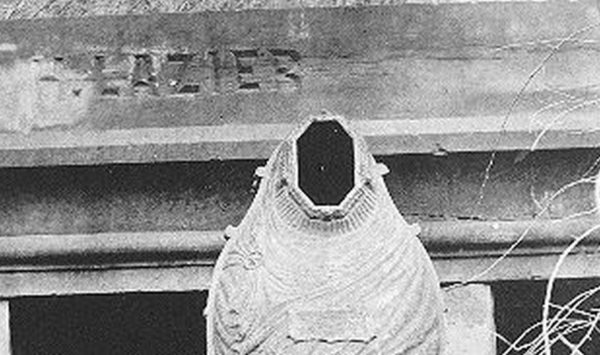
******************************************************************************************************************************** Brownstone Detectives investigates the history of our clients’ homes. The story you are about to read was composed from research conducted in the course of one of those investigations. Do you know the history of YOUR house? ******************************************************************************************************************************** Beware BODY SNATCHERS! Beware GRAVE ROBBERS! BEHOLD, the Fisk Metallic Burial Case! F.A. MORREL, UNDERTAKER AND DISTRIBUTOR, 57 MYRTLE In 1852, a Brooklyn Heights “sexton and general undertaker” by the name of F. A. Morrel, practicing at his “coffin-wareroom” at No. 57 Myrtle Avenue, was promoting to the Brooklyn public the latest design in funerary offerings – the Fisk Metallic Burial Case. Originally designed as a vessel that would keep a dead body from decomposing if the individual had died far from home, the Fisk Metallic Burial Case would soon “take on a new life,” so to speak, for those who wanted their nearby loved ones to keep from rapidly decomposing, as well. For this reason, many Fisk ads promoted their cases for the general preservation of the body – which was important to those whose burial case included a “viewing plate,” allowing for the living relatives to view the departed one’s face. “From a coffin of this description the air may be exhausted so completely as entirely to prevent the decay of the contained body on principles well understood,” noted Fisk’s patent, “or, if preferred, the coffin may be filled with any gas or fluid having the property of preventing putrefaction.” Another of the selling points of these cast iron […]
WHICH LANDMARKS TO DEMOLISH? (1913)
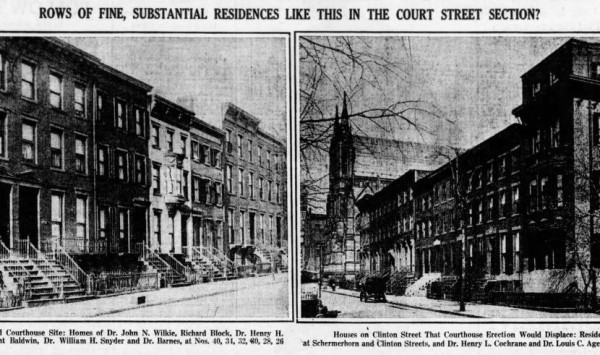
******************************************************************************************************************************** Brownstone Detectives investigates the history of our clients’ homes. The story you are about to read was composed from research conducted in the course of one of those investigations. Do you know the history of YOUR house? ******************************************************************************************************************************** In 1913, Brooklyn was looking to tear down long rows of stately brownstones. These brownstones were “substantial residences” in the “Court Street Section” comprising Nos. 24 to 40 Schermerhorn Street and Nos. 141 to 137 Clinton Street. The owners of these homes, upon discovering that their residences were in the path of the newest Brooklyn courthouse, were, understandably, up in arms. Eminent Domain or no, they were having none of it, and they started a campaign to force the city to locate a building site more suitable. Apparently, these men got to the Brooklyn Daily Eagle, which published this spread showing their houses – along with their names (5 out of the 7 of whom were doctors) – and compared their residences (favorably, of course) to an alternative site that they had seclected comprised of “several blocks of lodging houses, dance halls and the like in the Bridge Plaza District,” asking the question: “WHICH SITE CAN BE BETTER SPARED FOR A COURT HOUSE?” Playing upon the morals of the people of Brooklyn, it would be clear which site would meet the wrecking ball when, the following day, an assemblyman from Brooklyn by the name of Burr announced that the New York State Assembly would soon adopt his bill “taking from the […]
THE BOMBING OF BROOKLYN HEIGHTS (1892)
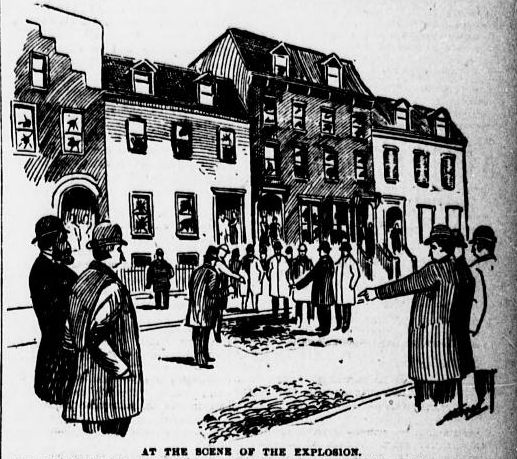
******************************************************************************************************************************** Brownstone Detectives investigates the history of our clients’ homes. The story you are about to read was composed from research conducted in the course of one of those investigations. Do you know the history of YOUR house? ******************************************************************************************************************************** It was just past 1 a.m. on a cool Saturday morning in the tony Columbia Heights section of Brooklyn. The police reserves of the Second Precinct, under the able leadership of Sergeant Joseph Carrougher, would soon be arriving on the scene. Carrougher’s desk sergeant had just awoken him out of a deep sleep at the Fulton Street police station. The sergeant had looked at him gravely in the dark of the room. “Somebody exploded a dynamite bomb on Willow Street.” “GROTESQUELY DRESSED, THE RESULT OF A HURRIED TOILET” When Carrougher arrived on the scene, he found Officer Seymour, “a portion of whose post was the scene of the explosion,” along with “a crowd of citizens” busily disturbing the crime scene. It was not too troublesome, however, having this crowd of citizens, “grotesquely dressed, the result of a hurried toilet,” tromping about the evidence. So long as they did not take anything that would assist in apprehending the guilty party. But many at the scene that night had begun amusing themselves “by digging out the fine white powder of the cobblestone with their penknives,” taking away samples. Sgt. Carrougher had seen it all in his 25 loyal years of dedication to the force. And while there were a number of clues that […]
MAD DOGS & BROOKLYN MAYORS (1844)
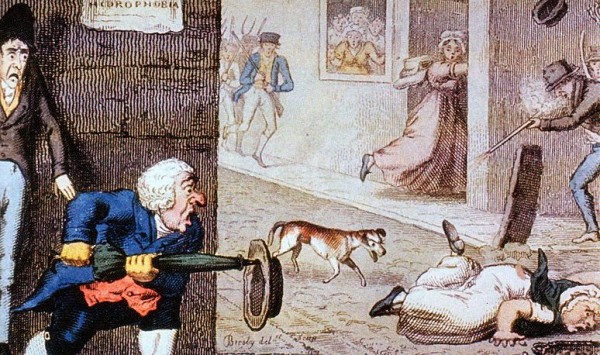
******************************************************************************************************************************** Brownstone Detectives investigates the history of our clients’ homes. The story you are about to read was composed from research conducted in the course of one of those investigations. Do you know the history of YOUR house? ******************************************************************************************************************************** In Brooklyn in 1843, there was a dog problem. A MAD dog problem. The people of Brooklyn – in what makes up Brooklyn Heights and the Downtown Brooklyn area today – were getting fed up with the number of strays, a good number of which were exhibiting “mad” tendencies, biting Brooklynites from time to time. A newspaper of the period complained of how “our streets are filled with miserable, half-starved curs whose dismal howlings make night hideous.” They demanded, thus, that a law be enacted to “shield us from that frightful malady – hydrophobia.” A FEAR OF WATER Back in the day, the disease that we know today as rabies was called hydrophobia. The disease was labeled hydrophobia – or a fear of water – because its subjects were not only unable to swallow water, but they had such a fear of it that it sent them into spasms or running from its very presence. And, of course, there was no cure for hydrophobia. Although, there was no shortage of quacks who sold “instant cures” to the masses through the mails or in their offices – such as the goodly Dr. S. Bachelder, across the East River at 343 Broome Street on Manhattan. Bachelder offered “Thompsonian and other Botanic Medicines” for […]
GREENWICH VILLAGE MOVES TO BROOKLYN (1921)
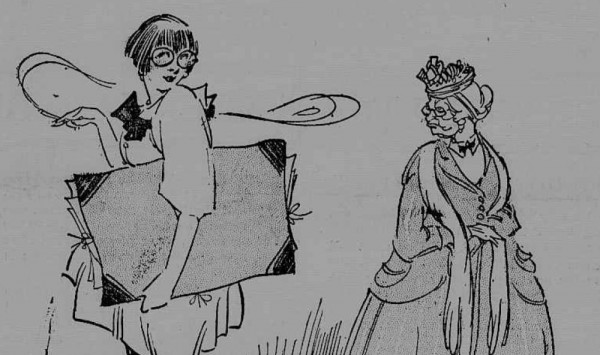
******************************************************************************************************************************** Brownstone Detectives investigates the history of our clients’ homes. The story you are about to read was composed from research conducted in the course of one of those investigations. Do you know the history of YOUR house? ******************************************************************************************************************************** “Greenwich Village is moving to Brooklyn. No, there isn’t a catch in it. It’s so.” So began the cover story of Magazine and Book section of the New York Sun from Sunday, 24 April 1921. “The new site of village activities,” the article explained, “was Brooklyn Heights.” And hair was short. It could have easily been 2017. THE BOHEMIAN LIFE OF BROOKLYN HEIGHTS The story, written by Hannah Mitchell – who would later become the editor of The Scarsdale Inquirer – took on the aura of the modern day true-life story associated with the small-town girl who’s moved to New York City in the past 5-10 years, and, finding she could not afford it – because she could not – had determined she would swallow her pride and halve her rent by moving to Bushwick, thus living (and defending) the bohemian life. Mitchell, who justified her move to Brooklyn Heights as just a slide over to another Greenwich Village with benefits, ballyhooed the pros of the Brooklyn Heights apartment and how it far surpassed that of the Greenwich Village. “From the outside these places are made attractive by little painted panels, frescoes over the doorways, and other quasi-exotic decoration,” Mitchell explained. “Inside they have the virtue of being freshly plastered and […]